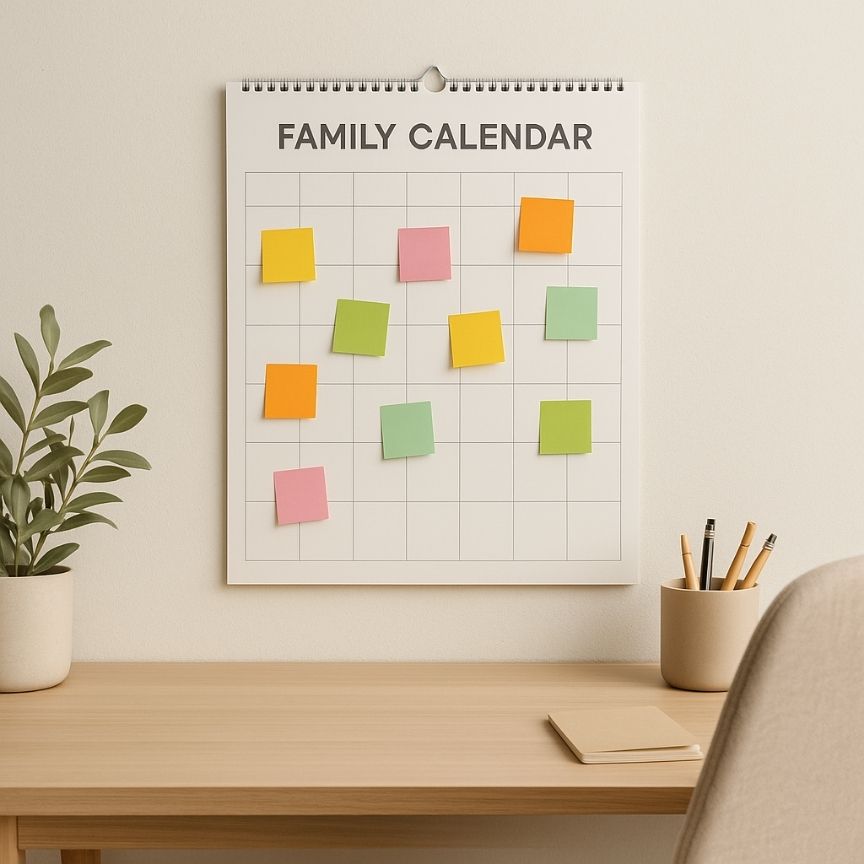Introduction
Mom burnout is the slow, relentless erosion of a mother’s energy, enthusiasm, and sense of self under the weight of nonstop caregiving, household management, and often paid work on top of it all. It’s more than feeling “extra tired”; it’s a chronic state where emotional reserves flatline, physical stamina nosedives, and mental clarity feels wrapped in fog. Signs can include snapping at small requests, dreading another school‑lunch assembly line, or lying awake at 3 a.m. too wired to rest yet too weary to move.
The pandemic years intensified this reality by collapsing boundaries between home, work, and school, but even in more ordinary times, modern motherhood can feel like an always‑on call light. This article offers realistic, compassionate strategies you can weave into busy days—no spa weekends required—to help you reclaim calm, restore energy, and rediscover joy in parenting and in yourself.
Recognize the Warning Signs
Burnout rarely appears overnight; it creeps in on cat feet. Learning its early signals lets you intervene before collapse.
- Emotional Exhaustion
- Constant irritability or tearfulness.
- Feeling detached from children’s laughter or milestones.
- Quick temper over minor mishaps (spilled juice feels like a crisis).
- Physical Fatigue
- Bone‑deep tiredness that coffee can’t touch.
- Trouble falling asleep—or waking often despite exhaustion.
- Frequent colds, headaches, or muscle tension because the immune system is on low battery.
- Mental Red Flags
- Brain fog: forgetting appointments, misplacing items daily.
- Sense of numbness—going through motions but not feeling present.
- Overwhelm at everyday decisions (what’s for dinner?) signaling decision fatigue.
Ignoring these cues can snowball into depression or chronic health issues. Naming them is the first self‑care act.

Reclaim Time for Yourself
“Me time” can sound like mythic luxury, but think of it as daily micro‑deposits into your energy bank.
- Start Small and Specific: Five‑minute rituals are powerful: sip tea on the balcony, breathe deeply in the parked car before daycare pickup, or journal one gratitude line while the kettle boils.
- Layer Self‑Care Into Existing Routines: Stretch while children play on the rug, listen to a favorite podcast while folding laundry, or apply a face mask during bedtime story (kids find it hilarious; laughter lowers cortisol for everyone).
- Set Gentle Boundaries: Explain to family: “I need 20 minutes after dinner for a solo walk; I’ll come back happier.” Frame it as a gift to them as well as you. Boundaries are bridges to longevity, not walls of selfishness.
- Schedule, Don’t Squeeze: Add your name to the calendar like any pediatric appointment—because you are the irreplaceable engine of the household.
Over time, these consistent mini‑breaks compound, turning survival mode into sustainable living.

Delegate, Ask, and Accept Help
Motherhood is a team sport—even if cultural myths still crown the self‑sacrificing “supermom.”
- Share Household Load: Partners can handle bath time or grocery ordering; older kids can sort laundry or prep salads. Create a visible chore chart to make labor distribution explicit rather than assumed.
- Tap Extended Network: Grandparents, siblings, or trusted friends often want to help but need clear direction: “Could you watch the baby Tuesday 3‑5 p.m. so I can nap?” is actionable; “Let’s hang out sometime” is not.
- Use Community Resources: Consider rotating babysitting co‑ops, meal‑train sign‑ups after new births, or faith‑based support circles. Professional help—cleaning services, virtual assistants—can be sanity investments if budget allows.
- Reframe Asking as Strength: Accepting aid models healthy interdependence for children; it shows them that thriving communities rely on mutual support, not martyrdom.
Dismantling the supermom script frees mental space for joy and creativity rather than constant crisis response.

Rethink Your Routine
Many moms aren’t overtasked solely by quantity but by decision fatigue—the dozens of micro‑choices demanded each hour.
- Simplify Systems: Choose a weekly meal rotation (Taco Tuesday, Pasta Thursday). Adopt capsule wardrobes for kids to reduce outfit debates. Automate bill payments and use shared digital calendars.
- Build White Space: Schedule buffer zones between commitments. Arriving ten minutes early to school pick‑up lets you breathe instead of sprint. Guard one weekend morning as plan‑free family time.
- Prioritize With Values, Not “Shoulds”: Ask, “Does this activity nurture our family’s goals or drain us?” Dance lessons may delight one child but exhaust another. Let meaningful pursuits, not societal expectations, drive enrollment.
- Insert Rest Cues: Treat rest as a task: a ten‑minute legs‑up‑the‑wall break reboots circulation; evening screen curfew protects sleep. When the body feels safe, patience returns.
Streamlining routines produces mental real estate—space where spontaneity and delight can return.

Connect with Other Moms
Isolation amplifies burnout; community dilutes it like sun through clouds.
- In‑Person Networks: Join local stroller walks, library story‑time groups, or hobby classes (yoga, pottery) with childcare options. Face‑to‑face laughter releases oxytocin, buffering stress.
- Virtual Villages: Online forums or group chats around breastfeeding, neurodiversity, or homeschool hacks let you crowd‑source solutions at 2 a.m. and feel instantly understood.
- Peer Mentorship: Pair with a mom one stage ahead—her hindsight can shorten your learning curve. Offer guidance to someone newer on the path; teaching reinforces your own growth.
- Celebrate Wins Together: Share not only struggles but triumphs: “I got everyone to bed by 8!” Mutual cheerleading builds resilience.
When mothers witness and validate each other’s journeys, shame loses its grip and collective wisdom lights the trail back to balance.

Conclusion
Reversing mom burnout is not a single grand gesture but a mosaic of small, intentional choices: noticing early warning signs, carving realistic pockets of self‑care, welcoming help, trimming life’s excess, and weaving supportive friendships. Each step is a vote for your well‑being and, by extension, your children’s thriving—because a rested, emotionally nourished mom radiates patience, creativity, and connection that benefits the entire household. Offer yourself the same compassion you freely give others; renewal starts with believing you deserve it.





